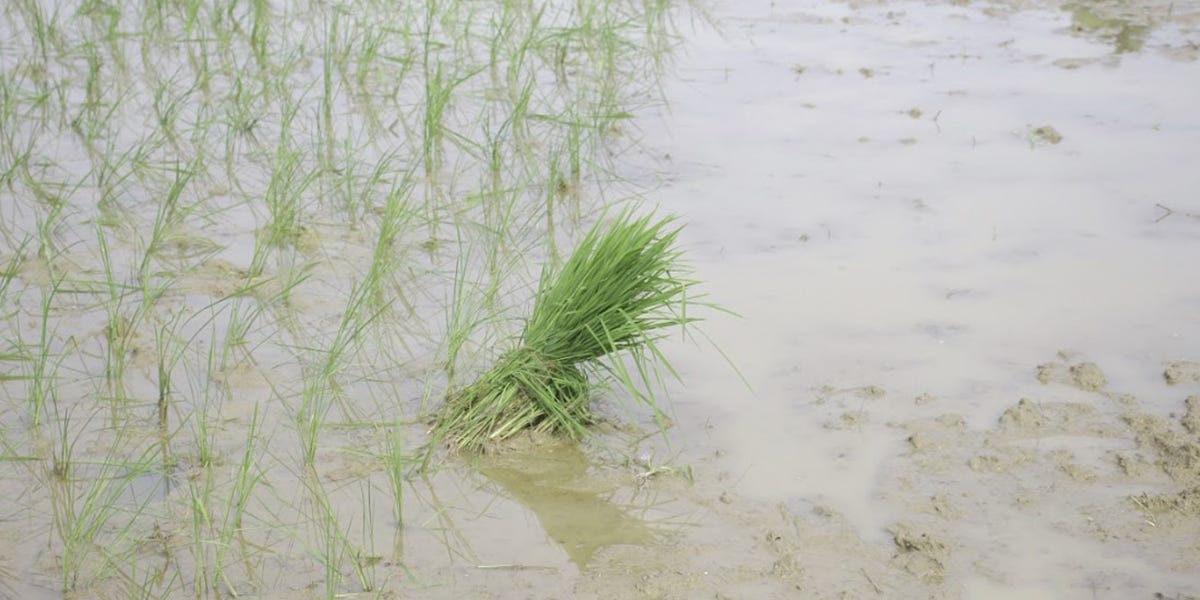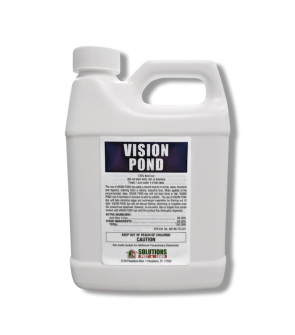Gain access to personalized product screening, the best pricing, rewards, and more!
Most Effective Products
Wild Rice Control: How To Get Rid of Wild Rice
This page is a general DIY guide for controlling wild rice. Using the suggested products and methods, you can control wild rice. Follow this DIY article and use the recommended products, and we guarantee 100% control of wild rice.
Wild rice is an aquatic plant native to North America that grows predominantly in the Great Lakes region. This large-seeded species primarily grows on lakes, marshes, and rivers. Its yellow to reddish grains have been eaten by Native American tribes like the Ojibway, Menomini, and Cree for centuries as a staple food.
Wild rice is known to have very tall, thick stems that stick up out of the water where established. These can get in the way of fishing and other recreational activities and hurt the appearance of a water body.
Wild rice has always been difficult to control, and if left untreated, it can infest waters at an alarming rate. If you have a wild rice problem on your lake or pond, it would be wise to implement and carry out a control program before they dominate your body of water. Our helpful DIY guide below covers all the advice and recommended products needed to get rid of Wild Rice quickly and affordably.
Identification

Before proceeding with a treatment program, you must be sure you are dealing with a wild rice infestation. Careless identification can lead to using the wrong treatment methods, which can waste time and money. Below are the following characteristics to help you understand what wild rice looks like.
- Wild rice can grow up to ten feet tall and has thick, spongy stems forming lower node roots. Its leaves are flat and strap-like and are up to two inches wide. Including its sheath, the leaf can reach three to four feet long.
- The leaf surfaces are smooth with rough margins. What makes them stand out the most are their flowerheads, which grow at the top of the stem. They are bushy with multiple branches with drooping and spikelets on the upper branches.
Using this description and image will help you identify whether the weed growing in your pond is wild rice. If you need help Identifying the plant, contact us with a close-up, high-quality photo of the weed, and we will respond with the correct plant identify.
Inspection
 Once you confirm that you are dealing with wild rice, you can move on to inspection. During this phase, you will locate areas where wild rice is thriving and observe the conditions that allow it to thrive. This information will help you know where to focus your herbicide application.
Once you confirm that you are dealing with wild rice, you can move on to inspection. During this phase, you will locate areas where wild rice is thriving and observe the conditions that allow it to thrive. This information will help you know where to focus your herbicide application.
Where to Inspect
Wild rice usually forms around marshes, lakes, and riversides in the fall. Walk around your lake or pond to observe the wild rice stand and determine the extent of the infestation. This is important for determining how much chemical product you need to treat the weed.
Survey your lake or pond and determine the best and safest action to take. You wouldn't want to harm any beneficial vegetation, fish, or other aquatic creatures.
What to Look For
Wild rice is a very large grass; if it is well-established, it's hard to miss. Look for thick stems that can grow 10 feet high, large leaves, and large seedheads that can be 2 feet long and a foot wide. The upper branches are simple and grow upwards, while the lower branches have droopy branchlets.
Treatment
Before carrying out chemical applications, wear the necessary personal protective equipment (PPE), such as gloves, glasses, and a particle mask, for safety.
Our recommended product to treat wild rice is 2,4-D Amine Selective Post-Emergent Herbicide. This emulsifiable concentrate may be applied to aquatic sites, but it must be performed in strips or sections at a time. If this is not followed, fish or other aquatic invertebrates and non-targeted plants will be affected.
2,4-D Amine Selective Post-Emergent Herbicide is not recommended for rice paddies where shellfish are of economic importance or for desired rice species.
Step 1: Prepare the 2,4-D Amine Selective Post-Emergent Herbicide

Before mixing and applying, you must calculate the size of the water body you wish to treat to determine how much product you will need. For water bodies, the measurement is usually done by calculating the acreage. To do this, measure the length, width, and average depth of the water body in feet, then divide by 43,560 (Length (ft.) x Width (ft.) x Average Depth (ft.) / 43,560 = Acre-feet).
2,4-D Amine Selective Post-Emergent Herbicide should be applied at a rate of 2 pints per acre. To apply the product in small sectional or spot treatment applications on your waterbody, use a backpack sprayer or a hand sprayer.
Fill your sprayer with the appropriate amount of 2,4-D Amine Selective Post-Emergent Herbicide. Replace the top and shake the sprayer to ensure the product is well mixed, and you will be ready to spray.
Step 2: Apply 2,4-D Amine Selective Post Emergent Herbicide to the Wild Rice
Spray the 2,4-D Amine Selective Post-Emergent Herbicide on the Wild Rice protruding out of the water, either along the shoreline or spot-treat where it is concentrated on your water body.
Due to the product's toxicity, you will need to conduct treatment in sections or lanes, waiting until the treated vegetation has disintegrated. During the growing season, foliage that has been treated will take 2 to 3 weeks to decompose after the first application.
A re-application may be necessary 30 days after the first application. However, do not exceed 2 treatments per season. Wild Rice can be a tough weed to remove, so monitoring your water and retreating the problem areas as directed on the label will take some time.
Prevention
Once wild rice has been eliminated from your property, you will need to implement preventative measures to ensure that this weed does not return.
- To discourage wild rice from coming back, we recommend applying Vision Pond Dye. Vision Pond Dye is helpful in stopping development of aquatic weeds like Wild Rice by blocking sunlight into the water and also gives your pond a clean blue color. The proper rate depends on your pond surface area and depth. A typical treatment is 1 quart per surface acre of water at a 5 foot average depth. Simply add the dye in a bucket and pour it at the edge of your water body. The water's natural movement will disperse the dye to the entire pond.
Key Takeaways
What is Wild Rice?
- Wild rice is a native grass that produces edible grains and creates dense stands on water properties.
What Products to Use For Wild Rice?
- We recommend applying 2,4-D Amine Selective Post-Emergency Herbicide to treat wild rice infestations. This product is harmful to desired rice, aquatic life, and vertebrae.
Preventative Treatment for Wild Rice
- Applying Vision Pond Dye after treatment can help prevent the re-establishment of wild rice and restore the look of your pond, giving it a natural blue color.











